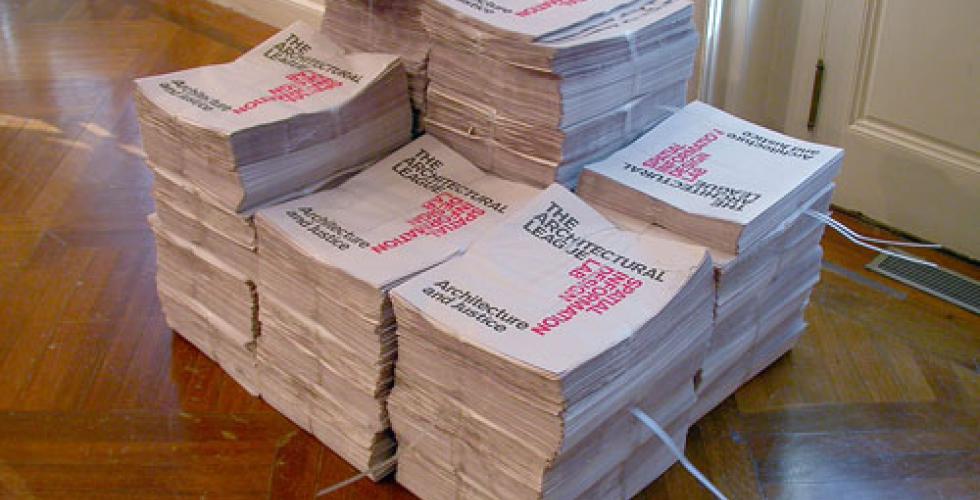Architecture and Justice
Exhibition and Scenario Planning workshop held at the Architectural League of New York.
SIDL won a competition in the Spring of 2005 run by the Architectural League of New York to mount and exhibition and run a scenario planning workshop within its gallery space. The League put out a call for Architecture and … . The three dots stood in for something extraneous to architecture which pushed beyond its own limits to transform its very definition. The Lab proposed “Architecture and Justice “ which was on view from September 15—October 28, 2006 at The Urban Center.
The exhibition focused on the first year of work completed by the lab around the “Million Dollar Blocks” project. We presented “Million Dollar Block” maps of New York, New Orleans, Wichita and Phoenix. The United States currently has more than 2 million people locked up in jails and prisons. A disproportionate number of them come from a very few neighborhoods in the country’s biggest cities. In many places the concentration is so dense that states are spending in excess of a million dollars a year to incarcerate the residents of single city blocks.
Half way through the exhibition, SIDL hosted a Justice Reinvestment Scenario Planning Workshop which was facilitated by the Global Business Network that brought together local government agency leaders, technical assistance specialists, community developers, architects, and urban planners to explore the possibilities of policy and design, highlighted by our maps, in a single neighborhood. It was our hope that the experts we had gathered around the tables in the space of the exhibit would contribute to taking the project from analysis into suggestions and proposals of possible futures for these places.
The form of intervention most commonly accepted by a range of people working on reentry, is "Justice Reinvestment." This is understood as an effort to reorient criminal justice and related government agency operations and resources around specific places in the city. More simply put, how might we save state money spent on prisons, and redirect that money where it is most needed, in the poorest urban areas of our cities?
The Workshop itself took place over the course of one day. It was structured around the presentation of a variety of data—criminal justice, homelessness, health and human services, socio-economic, land-use, and architectural—which workshop participants used to explore possible scenarios for a particular series of “million dollar blocks”. The results of the workshop are documented in a publication.
Brownsville in Brooklyn was the focus of the workshop, both because it is one of the highest prison and jail migration areas in the City and because it is the focus of current efforts by local housing developers (Common Ground) and technical assistance specialists (Family Justice) to establish more successful ways of resettling homeless and reentering populations. We took into consideration as well, that Brownsville, is part of a larger urban initiative – the Jail Discharge Planning Initiative that the Department Of Corrections(DOC) has been undertaking in partnership with the Department of Homeless Services(DHS) over the last three years.




